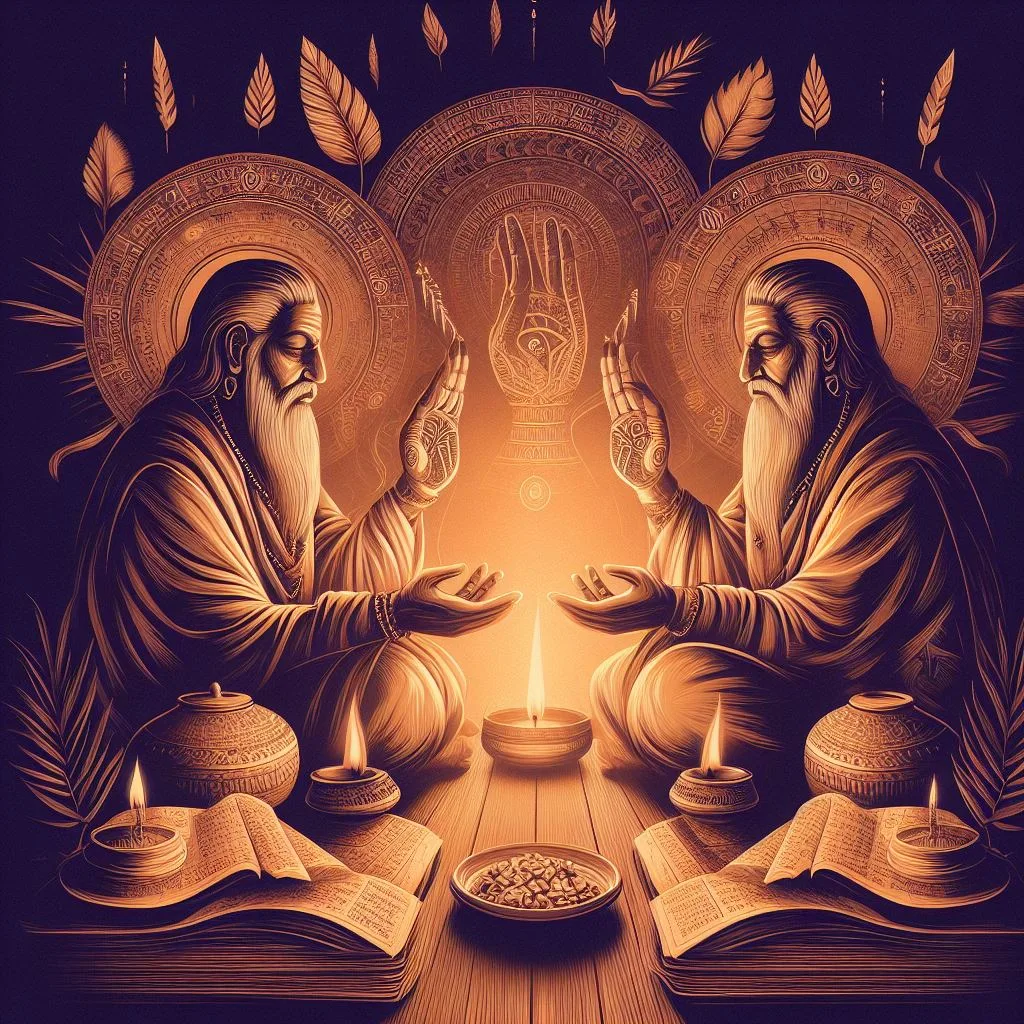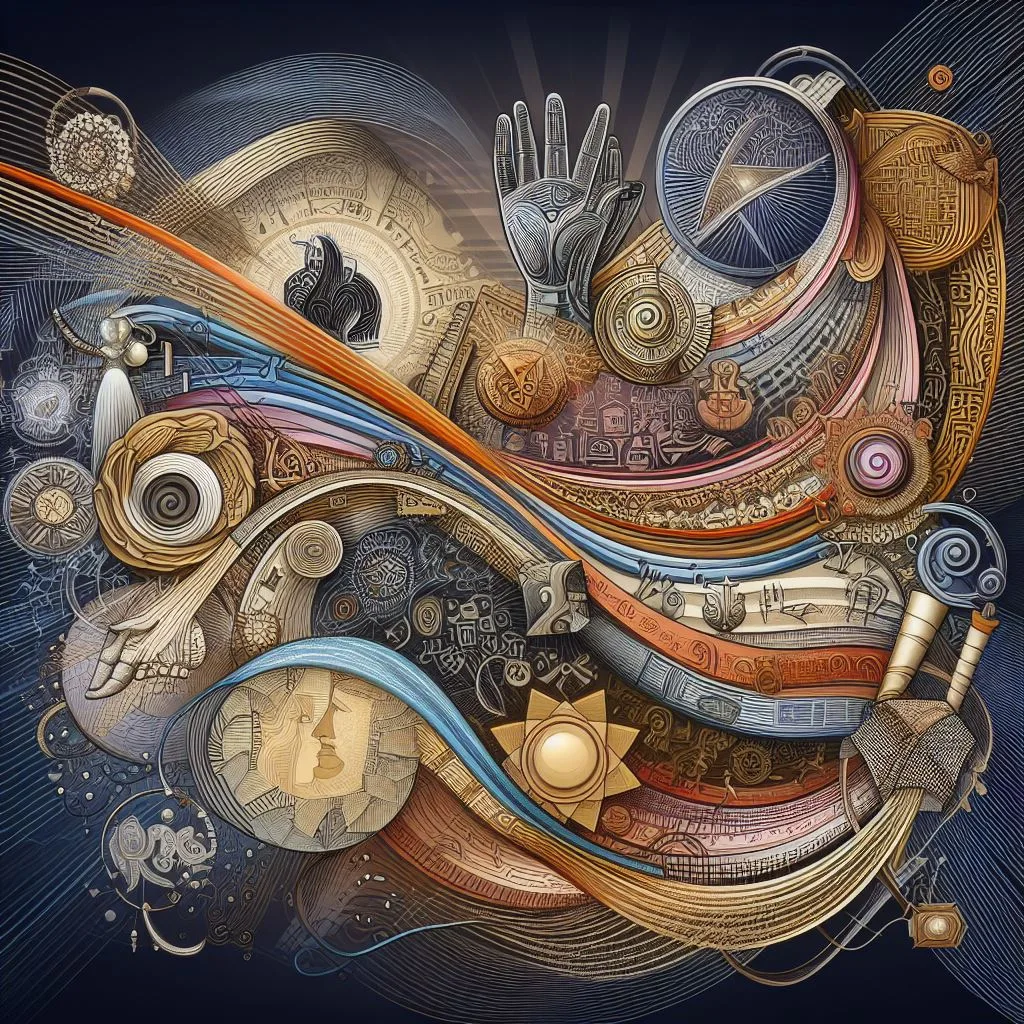
The Founders Of Palmistry
While palmistry is a universally practiced art form today, where did it originate, and who are the pioneering minds behind this captivating practice?
article by Nora Pennington
Palmistry is an intricate tapestry of knowledge and insight that has draped over the corridors of human history, offering insights into the human psyche and potential future events. The roots of palmistry, or chiromancy as it is also known, are shrouded in the mists of time, but it is generally believed to have originated in ancient India. The earliest references to palmistry are found in the Indian scriptures, the Vedas, dating back thousands of years.

The Journey From The East
From the land of its birth, palmistry traversed vast landscapes, reaching the realms of China and Egypt. The ancient Chinese embraced palmistry, intertwining it with their philosophies and utilizing it as a tool for understanding individuals' health and disposition. It is said that the legendary Chinese Emperor Huang Ti, who reigned around 2700 BCE, included palmistry in his book, "I Ching," a foundational text of Chinese wisdom.
The Greek Connection
Palmistry further expanded its wings, reaching the learned minds of ancient Greece. It was here that the philosopher Anaxagoras practiced and propagated palmistry, delving deep into its complexities and nuances. His teachings resonated with many, including the iconic philosopher Aristotle, who introduced palmistry to Alexander the Great. The illustrious conqueror, intrigued by this knowledge, employed palmistry to analyze his officers' personalities and gauge their loyalty.

The Middle Ages & Beyond
Palmistry's journey didn't halt with the Greeks. During the Middle Ages, despite the prevailing skeptical and hostile environment, palmistry managed to survive, albeit in secrecy. It was a time when anything perceived as 'occult' was vehemently condemned, and practitioners of such arts had to tread carefully.

With the Renaissance came a revival, a renewed interest in ancient wisdom, and palmistry too experienced a resurgence. It slowly gained acceptance and found a place alongside other forms of divination like astrology. Today, palmistry is a universally practiced art form, with countless individuals seeking its wisdom to understand their lives better.
A Mosaic Of Influences
Palmistry is not the offspring of a single culture or individual. It is a mosaic, a harmonious blend of thoughts, philosophies, and insights from different cultures and eras. It's a symphony of wisdom that has evolved and matured over centuries, echoing the thoughts of diverse civilizations.
The discovery of palmistry is not attributed to a single individual or civilization but is a culmination of knowledge from various cultures over the millennia. It’s a timeless tradition that has witnessed the rise and fall of empires, the birth of philosophies, and the evolution of human thought.

From the ancient sages of India to the philosophical minds of Greece, from the secretive practices during the Middle Ages to its universal acceptance today, palmistry remains a testament to humanity's eternal quest for knowledge and understanding. It continues to enchant, enlighten, and guide those who seek to unravel the mysteries of existence, etched in the lines of their hands.
Published: 10/12/2023
Modified: 10/23/2023
More predictions
Come back here soon to learn more about yourself and your future


The Ancient Enigma: Palmistry’s Roots
Despite its ancient roots, palmistry sails through an ocean of historical ambiguity and varied cultural interpretations. Throughout its historical voyage, palmistry has oscillated between being revered as a sacred art form and dismissed as superstitious belief.


Can Palmistry Reveal Tomorrow's Secrets?
Embarking upon a mystifying journey through the intricacies of palmistry, one finds oneself amidst an ocean of possibilities and pathways.


Where Ancient Wisdom & Science Meet
Palmistry feels like a beautiful puzzle wrapped in layers of enigma and wonder. But what if this age-old practice, grounded in deep cultural tales, is not just mystical whispers but also echoes of scientific truths?